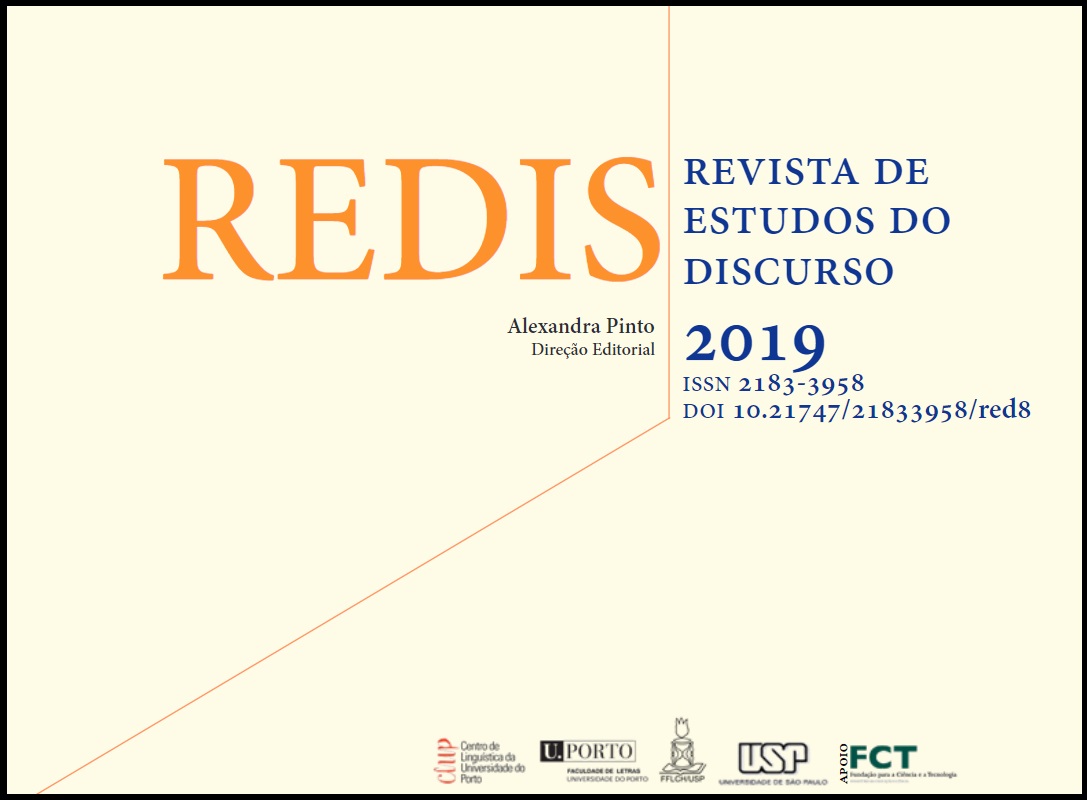The sublime in hate propaganda on the Internet - a critical discourse analysis
DOI:
https://doi.org/10.21747/21833958/red8a6Palavras-chave:
Sublime, Pathos, Internet, Figures of Speech, Terrorism, PropagandaResumo
This paper considers how two rhetorical concepts, pathos and the sublime, are used to reinforce hate propaganda on radical Islamist websites. The concept of pathos comes from Aristotle’s theory on modes of persuasion, which is based on the idea of stimulating dialogue, debate or even argument between a speaker and an audience to bring about the most favourable choice for the common good. The raison d’être of rhetoric, namely negotiation of social meaning through persuasive speech, has been recognised since Greek Antiquity. Although the desired goal of hate propaganda, above all else, is the destruction of social life, this article will show why pathos can be used to establish inter-subjectivity in a pseudo-shared social space, strengthening the impact of its persuasive action. Unlike pathos, the sublime is a sophist concept. Analysis of Islamic State’s website (jihadology.net) reveals how the sublime is used to trigger action influenced by constraint, fear and intense violence, through language. Hate propaganda uses the sublime as a tool for radical manipulation. The article will show how this strategy not only deprives Internet users of all ability to judge, but also transforms them into agents totally committed to the destruction of society.
Referências
Burke, E. (2009) [1757]. Recherche philosophique sur l’origine de nos idées du sublime et du beau [A Philosophical Enquiry into the Origin of Our Ideas of the Sublime and Beautiful], Paris: Vrin.
Doran, R. (2015). The Theory of the Sublime from Longinus to Kant, Cambridge: Cambridge Uni-versity Press, 2015.
Gambhir, H. K. (2014). “Dabic: The Strategic Messaging of the Islamic State”, Institute of the Study of War, http://www.understandingwar.org/sites/default/files/Dabiq%20Backgrounder_Harleen%20Final.pdf (18-11-2019)
Grimaldi, N. (2016). Les nouveaux somnambules. Paris: Grasset.
Longinus (1993). Du sublime, Paris: Rivages poche.
Luizard, P.-J. (2015). Le piège Daech. L’Etat islamique ou le retour de l’Histoire. Paris: La Découverte.
Reporters without Borders publication, Jihad against Journalists, especially the third section “Isla-mic State’s Propaganda Machine” https://gallery.mailchimp.com/5cb8824c726d51483ba41891e/files/RAPPORT_DAECH_FR_WEB.pdf (7-5-2017).
Rinn, M. (2011). “L’à-peu-près dans la figuration de la violence rhétorique”. Le Français moderne, 79th year, issue no.1, pp. 100-111.
Rinn, M. (2014). “Argumentation, Persuasion and Manipulation on Revisionist Websites. A Multi-modal Rhetorical Analysis.” In Christie C. and Maiorani A., Multimodal Epistemologies. Towards an Integrated Framework. New York and London: Routledge, pp. 145 -158.
Warrick, J. (2015). Black Flags. The Rise of ISIS. New York: Penguin Randomhouse.
Downloads
Publicado
Como Citar
Edição
Secção
Licença
Direitos de Autor (c) 2020 Redis: Revista de Estudos do discurso

Este trabalho encontra-se publicado com a Licença Internacional Creative Commons Atribuição 4.0.
Os autores cedem à REDIS: Revista de Estudos do Discurso, o direito exclusivo de publicação dos seus textos, sob qualquer meio, incluindo a sua reprodução e venda em suporte papel ou digital, bem como a sua disponibilização em regime de livre acesso em bases de dados.




